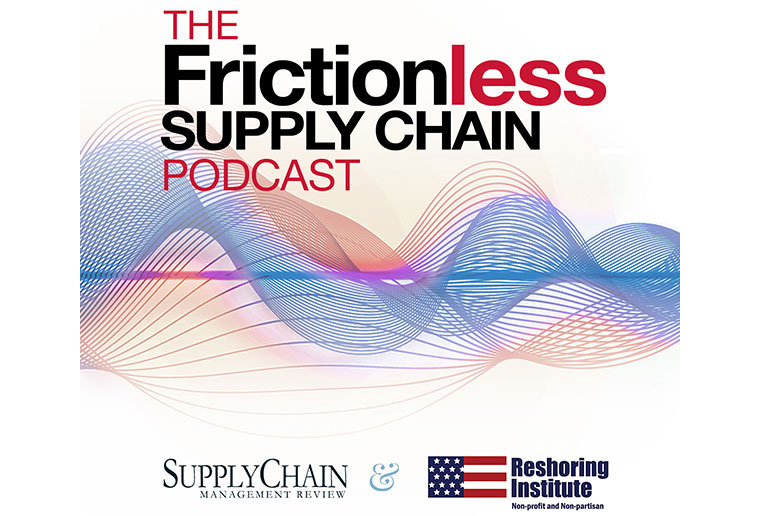While California has long been a vital leader creating trade and transportation trends, the state is becoming stymied by a variety of problems it can't seem to solve.
Southern California's infamous highway gridlock, for example, not only torments the region's logistics managers, but it may also be detrimental to regional job growth.
According to findings of a recent survey conducted by the Los Angeles County Business Federations (BizFed), employers named transportation as one of their top business concerns, second only to taxes and fees. Among 22 categories examined, transportation maintained its four-year upward trajectory on the list of top concerns, moving to the number two spot in 2016 from the number four spot in 2015. In 2013, transportation ranked as the number ten concern of employers.
“Employers are feeling the effects when their employees, customers and contractors spend four or more hours a day on the road,” said Tracy Hernandez, Founding CEO, BizFed. “Congestion and long commutes are resulting in major disruptions in productivity, goods movement, and recruiting and retaining employees.”
The annual BizFed poll represents a snapshot of key issues of concern in the Los Angeles County business community, based on surveys of business owners and executives regarding the issues they deem most critical to the ongoing operation and growth of their business.
The 2016 results suggest that transportation problems are also poised to significantly affect future job growth. Forty-four percent of employers ranked “traffic congestion” as a main reason that businesses and jobs are leaving Los Angeles County/California.
Respondents also believe transportation infrastructure in Los Angeles is a serious impediment to business growth and job creation. Across almost all categories, more employers identified transportation-related public infrastructure as needing “immediate attention” than in the previous year: roads and streets (57% in 2016, compared to 52% in 2015), highways and freeways (51% versus 48%). Shippers will not doubt note that 32 percent of employers also named ports and airports as an immediate need…the same as in 2015.
Jock O'Connell, a Sacramento-based international trade economist affiliated with Beacon Economics, also notes that freeway congestion and the deplorable condition of road surfaces loom large as cost factors, too.
“California's highways are a civic embarrassment,” he says. “There's nothing world-class about them.”
O'Connell also observes that as recently as three years ago, truck drivers could hope to make two round trips per day from the Central Valley to the Port of Oakland. Now, trucking lines serving the Port of Oakland are fortunate to make one round trip per day. But with fixed equipment costs, the inability to make maximum use of their trucks and drivers due to the state's failure to maintain a transportation infrastructure consistent with contemporary commercial needs ultimately results in higher transport costs to shippers.
“And there are more costs to come,” predicts the economist.
As noted in SCMR late last year, Gov. Jerry Brown issued an executive order calling on state agencies to develop “an integrated action plan that establishes clear targets to improve freight efficiency, transition to zero-emission technologies and increase competitiveness of California's freight system.”
O'Connell maintains that “pulling that off will be an exceedingly neat trick,” as it insists that the policies and programs it will engender will keep California's freight transportation systems competitive without compromising the Governor's pre-eminent goal of dramatically reducing carbon emissions.
“The hastily cobbled draft, reflects an antiquated grasp of transportation logistics and a dubious set of assumptions about the link between economic growth (especially as measured in terms of gross domestic product) and forecasts of the volume of goods expected to be handled in California in coming years,” says O'Connell.
Furthermore, implementation of the plan would require huge capital investments for the state's three major ports. According to a study by Moffat & Nichol, a leading engineering firm, converting the ocean cargo gateways of Long Beach, Los Angeles and Oakland to zero emission equipment will cost $35 billion in the next 30 years, compared with $7 billion to replace existing equipment.
Inevitably, says O'Connell, new business costs get passed on. Weighed down with huge new expenses, terminal operators at California ports will have no choice but to charge higher fees.
“But shipping lines and cargo owners have options, especially with an expanded Panama Canal,” he says.
SC
MR

Latest Supply Chain News
- Tips for CIOs to overcome technology talent acquisition troubles
- There is still work to do to achieve supply chain stability
- Blooming success: The vital role of S&OE in nurturing global supply chains
- Supply chain salaries, job satisfaction on the rise
- How one small part held up shipments of thousands of autos
- More News
Latest Podcast

 Explore
Explore
Topics
Latest Supply Chain News
- Tips for CIOs to overcome technology talent acquisition troubles
- There is still work to do to achieve supply chain stability
- Blooming success: The vital role of S&OE in nurturing global supply chains
- Supply chain salaries, job satisfaction on the rise
- How one small part held up shipments of thousands of autos
- Investor expectations influencing supply chain decision-making
- More latest news
Latest Resources

Subscribe

Supply Chain Management Review delivers the best industry content.

Editors’ Picks





